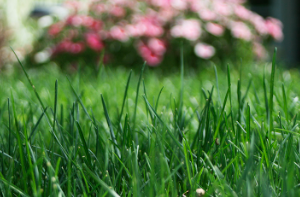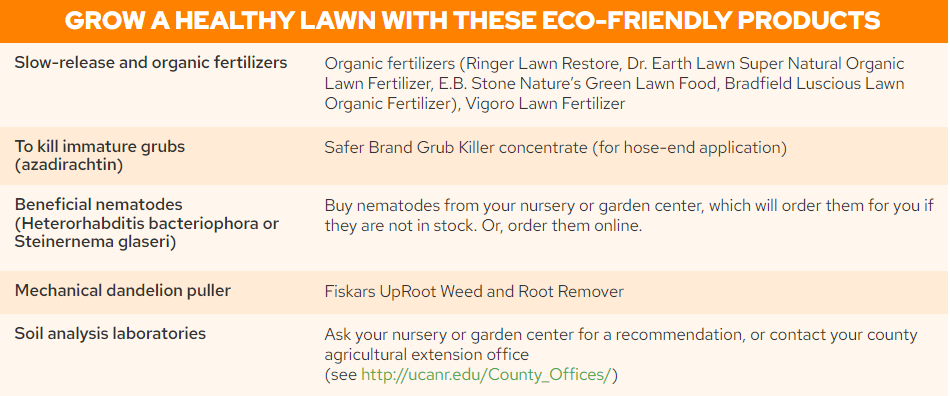
Learn about caring for your lawn and dealing with weeds and pests while protecting the health of people, pets, and our environment with these tips from the City of Goleta Environmental Services Division.
Caring for an Established Lawn
Water- just enough!
- Don’t overwater. Check the soil moisture with a trowel. The top two to three inches should feel almost dry before you add more water.
- Water enough to send the roots deep into the soil. When you think you’ve watered enough, push a trowel into the soil and tilt it forward. If the soil isn’t damp down to four or six inches, keep watering until it is. Keep track of how long you water, for next time.
- Water slowly so that water stays on your lawn and doesn’t run off. Overwatering is one way pesticides and fertilizers find their way to storm drains.
- If water runs off or pools even with slow irrigation, your soil may be compacted—which makes it hard for healthy roots to grow. See Restoring a lawn to health for tips on addressing this problem.
- Know your soil type. Clay soils hold more moisture and dry out more slowly, and need less frequent watering. Sandy soils dry out faster.
Grass clippings: Home-grown fertilizer
Unless your soil is very sandy, you should not need to add fertilizer (nutrients) to your lawn.
- Grass clippings left on the lawn after mowing can provide most of the nutrients your lawn needs. Clippings must be small enough to decompose quickly without forming a mat on top of the living grass. See Mowing a healthy lawn.
- Synthetic or quick-release fertilizers, if misapplied, can “kill” the soil by killing the good bacteria and destroying the supporting soil structure.
- If you do need to feed your lawn, use organic or slow-release fertilizers such as sulfur- or polymer-coated urea.
Mowing a healthy lawn
- Mow when the grass is dry.
- In general, cut no more than 1/3 of the leaf blade when you mow, and keep mower blades sharp. Cutting off too much or wounding grass with a dull blade stresses the lawn and invites pests and diseases.
- During warm weather months, cut the grass higher to help the soil hold onto water.
- Change your mowing pattern or direction often to avoid compacted mower tracks.
- If blades of grass are turning yellow and orange powder comes off onto your hands, your lawn has rust disease and you should collect lawn clippings and throw them away. Control and prevent rust with good lawn care practices, including fertilizing with organic or slow-release fertilizers.
Dealing with Weeds
A completely weed-free lawn is… unnatural! But a healthy lawn will crowd out most weeds. Think about how many weeds you can tolerate.
- Dig weeds by hand before they go to seed, and try to pull out the roots. A forked-end hand weeder picks up weeds such as dandelions by the crown so that the long tap root comes too. There is also a foot-powered, stand-up tool that works well.
- Reseed bare spots so weeds can’t fill in. Sprinkle grass seed and water regularly with a fine spray until grass sprouts.
- Don’t mow grass too short. Taller blades can shade the soil enough to prevent some weed seeds from sprouting.
- Avoid weed-and-feed fertilizers because the herbicides in these products may drift to other parts of your garden, and in some cases even kill shallow-rooted trees.

Find more information on planting a healthy lawn in our OWOW brochures in English and Spanish.
The City of Goleta along with the Cities of Buellton, Carpinteria, Solvang, Santa Barbara, Santa Maria, and the County of Santa Barbara have partnered with the OWOW organization to promote the use of less-toxic products in an effort to reduce pesticide pollution in our communities. By reducing pesticide use and the use of less-toxic products around the home, you can help reduce pesticides and other pollutants such as herbicides and fertilizers from being picked up while watering or when it rains and transported to the nearest storm drain inlet and into our waterways. The OWOW website is a great resource for finding less-toxic products to use around your home or garden.


